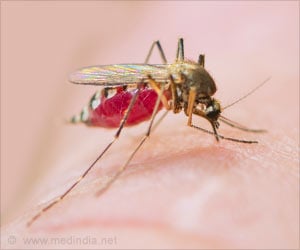Oropouche virus, or "sloth fever," has shown recent outbreaks in South America and the Caribbean, and cases reported in the US and Europe.
- Oropouche virus spreads through midges and mosquito bites, with no documented person-to-person transmission
- Recent outbreaks have occurred in the Amazon, South America, and the Caribbean, with cases reported in the US and Europe
- There is no specific treatment or vaccine available, with medical management focusing on alleviating symptoms and providing supportive care
Clinical Overview of Oropouche Virus Disease
Go to source).
Oropouche virus can cause severe complications like bleeding, meningitis, or encephalitis in 1 in 20 patients? #medindia #tropicaldiseases #oropouchefever’
How the Oropouche Virus Spreads
Oropouche virus primarily spreads to humans through bites from small flies known as midges, as well as certain mosquito species. While humans contract the virus during visits to forested areas, there's no documented evidence of person-to-person transmission. However, humans are believed to have contributed to the virus's spread to urban areas.Since late last year, Oropouche virus has been identified as the cause of significant outbreaks in regions where it was already known to exist, such as the Amazon, as well as in new areas across South America and the Caribbean. Over 8,000 locally acquired cases have been reported in Bolivia, Brazil, Colombia, Cuba, and Peru. The virus has also made its way to other parts of the world, with travelers in the U.S. and Europe being diagnosed after returning from affected regions.
In the United States, the Centers for Disease Control and Prevention (CDC) reported 21 cases, all linked to travelers from Cuba, with 20 cases in Florida and one in New York. Similarly, European health authorities have reported 19 cases, predominantly among travelers.
Symptoms and Treatment of Oropouche Virus
Oropouche virus disease typically has an incubation period of 3–10 days. The illness generally begins with a sudden fever (38-40°C) accompanied by severe headache, chills, muscle pain, and joint pain.The symptoms of Oropouche virus infection can resemble those of other tropical diseases like dengue, Zika, or malaria. Common symptoms include fever, headaches, and muscle aches, with some individuals also experiencing diarrhea, nausea, vomiting, or rash. In severe cases, 1 in 20 patients may develop more serious complications such as bleeding, meningitis, or encephalitis. Although fatalities are rare, recent reports from Brazil indicate deaths among two healthy young individuals.
Symptoms generally last between 2 and 7 days, but up to 60% of patients may experience a recurrence of symptoms days or weeks later, which are similar to the initial episode.
The symptoms of Oropouche virus disease can resemble those of dengue,
Diagnosis and Treatment of Oropouche Virus
Unfortunately, there are currently no vaccines available to prevent Oropouche virus infection, nor are there specific treatments to address its symptoms. Medical management focuses on alleviating symptoms and providing supportive care.Some patients with Oropouche virus disease have shown abnormal lab results, including low white blood cell and lymphocyte counts, elevated C-reactive protein (CRP), mildly raised liver enzymes, and in some cases, low platelet counts.
Oropouche virus can lead to neuroinvasive complications such as meningitis or encephalitis in about 4% of cases. Symptoms of neuroinvasive disease include severe occipital pain, dizziness, confusion, lethargy, light sensitivity, nausea, vomiting, neck stiffness, and abnormal eye movements. Lab abnormalities in cerebrospinal fluid (CSF) may include increased white blood cells and elevated protein levels.
Weakness and fatigue may persist in some patients for up to a month after symptom onset. Severe cases might require hospitalization, but most patients recover fully without long-term effects. Deaths are rare.
Emerging Concerns about Oropouche Virus
In Brazil, there are growing concerns that the Oropouche virus could be transmitted from a pregnant woman to her fetus, drawing comparisons to the Zika virus outbreaks nearly a decade ago. This potential risk has prompted the CDC to advise pregnant women to avoid non-essential travel to Cuba and to recommend that all travelers take precautions against insect bites, such as using insect repellents and wearing protective clothing.The Oropouche virus, while not new, is gaining attention due to its spread beyond traditional forested regions and into urban areas and new countries. With no specific treatment or vaccine available, the focus remains on prevention and monitoring, especially for travelers returning from affected areas. Public health authorities continue to advise caution and proactive measures to reduce the risk of infection.
Reference:
- Clinical Overview of Oropouche Virus Disease - (https://www.cdc.gov/oropouche/hcp/clinical-overview/index.html)
Source-Medindia












